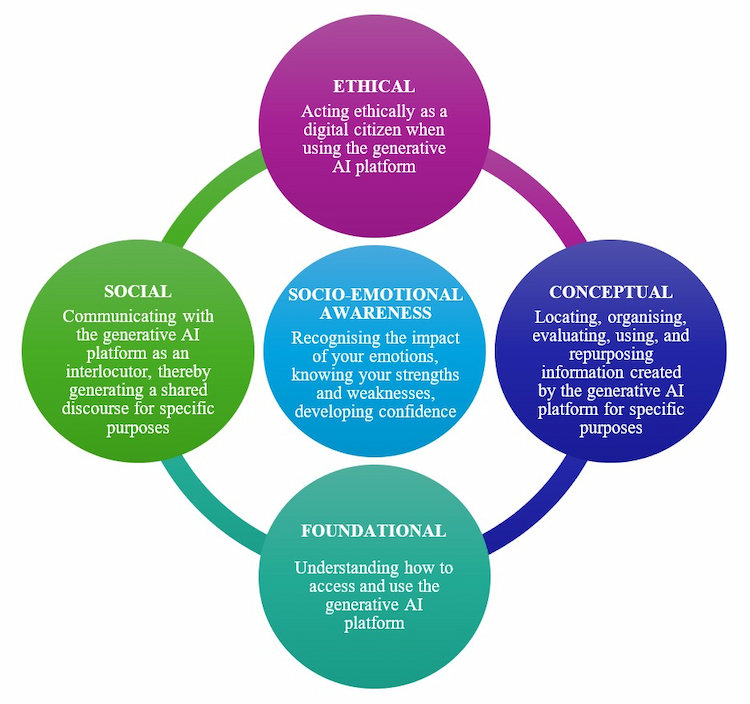

Beyond Publication. Access as a Research Integrity Issue
If research integrity now extends beyond publication to include how scholarship is discovered and used, then access is not a secondary concern. It is foundational. In practice, this broader understanding of integrity quickly runs into a hard constraint: access. A significant percentage of academic publishing is still behind paywalls, and traditional library sales models fail to serve institutions with limited budgetsor uneven digital infrastructure. Even where university libraries exist, access is often delayed or restricted to narrow segments of the scholarly record. The consequences are structural rather than incidental. When researchers and practitioners cannot access the peer-reviewed scholarship they need, it drops out of local research agendas, teaching materials as well as policy conversations. Decisions are then shaped by whatever information is most easily available, not necessarily by what is most rigorous or relevant. Over time, this weakens citation pathways, limits regional participation in scholarly debate, and reinforces global inequity in how knowledge is visible, trusted, and amplified. The ongoing success of shadow libraries highlights this misalignment: Sci-Hub reportedly served over 14 million monthly users in 2025, indicating sustained and widespread demand for academic research that existing access models continue to leave unmet. This is less about individual behaviour than about a system that consistently fails to deliver essential knowledge where it is needed most. The picture looks different when access barriers are reduced: usage data from open and reduced-barrier initiatives consistently show strong engagement across Asia and Africa, particularly in fields linked to health, education, social policy, and development. These patterns highlight how emerging economies rely on high-quality publishing in contexts where it directly impacts professional practice and public decision-making. From a research integrity perspective, this is important. When authoritative sources are inaccessible, alternative materials step in to fill the gap. The risk is not only exclusion, but distortion. Inconsistent, outdated, or unverified sources become more influential precisely because they are easier to obtain. Misinformation takes hold most easily where trusted knowledge is hardest to reach. Addressing access is about more than widening readership or improving visibility, it is about ensuring that high-quality scholarship can continue to shape understanding and decisions in the contexts it seeks to serve. For university presses committed to the public good, this challenge sits across discovery systems, licensing structures, technology platforms, and the partnerships that increasingly determine how research is distributed, interpreted, and reused. If research integrity now extends across the full lifecycle of scholarship, then sustaining it requires collective responsibility and shared frameworks. How presses engage with partners, infrastructures, and governance mechanisms becomes central to protecting both trust and impact. FAQ: What challenges exist in current access models?Many academic works remain behind paywalls, libraries face budget and infrastructure constraints, and access delays or restrictions can prevent researchers from using peer-reviewed scholarship effectively. What happens when research is inaccessible?When trusted sources are hard to reach, alternative, inconsistent, or outdated materials often fill the gap, increasing the risk of misinformation and weakening citation pathways. How does Zendy help address access challenges?Zendy provides affordable and streamlined access to high-quality research, helping scholars, practitioners, and institutions discover and use knowledge without traditional barriers. For partnership inquiries, please contact: Sara Crowley VigneauPartnership Relations ManagerEmail: s.crowleyvigneau@zendy.io .wp-block-image img { max-width: 65% !important; margin-left: auto !important; margin-right: auto !important; }

Beyond Peer Review. Research Integrity in University Press Publishing
University presses play a distinctive role in advancing research integrity and societal impact. Their publishing programmes are closely aligned with public-interest research in the humanities, social sciences, global health, education, and environmental studies, disciplines that directly inform policy and progress toward the UN Sustainable Development Goals. This work typically prioritises depth, context, and long-term understanding, often drawing on regional expertise and interdisciplinary approaches rather than metrics-driven outputs. Research integrity is traditionally discussed in terms of editorial rigour, peer review, and ethical standards in the production of scholarship. These remain essential. But in an era shaped by digital platforms and AI-led discovery, they are no longer sufficient on their own. Integrity now also depends on what happens after publication: how research is surfaced, interpreted, reduced, and reused. For university presses, this shift is particularly significant. Long-form scholarship, a core strength of press programmes, is increasingly encountered through abstracts, summaries, extracts, and automated recommendations rather than sustained reading. As AI tools mediate more first encounters with research, meaning can be subtly altered through selection, compression, or loss of context. These processes are rarely neutral. They encode assumptions about relevance, authority, and value. This raises new integrity questions. Who decides which parts of a work are highlighted or omitted? How are disciplinary nuance and authorial intent preserved when scholarship is summarised? What signals remain to help readers understand scope, limitations, or evidentiary weight? This isn’t to say that AI-driven discovery is inherently harmful, but it does require careful oversight. If university press scholarship is to continue informing research, policy, and public debate in meaningful ways, it needs to remain identifiable, properly attributed, and grounded in its original framing as it moves through increasingly automated discovery systems. In this context, research integrity extends beyond how scholarship is produced to include how it is processed, surfaced and understood. For presses with a public-interest mission, research integrity now extends across the full journey of a work, from how it is published to how it is discovered, interpreted and used. FAQ Can Zendy help with AI-mediated research discovery?Yes. Zendy’s tools help surface, summarise, and interpret research accurately, preserving context and authorial intent even when AI recommendations are used. Does AI discovery harm research, or can it be beneficial?AI discovery isn’t inherently harmful—it can increase visibility and accessibility. However, responsible use is essential to prevent misinterpretation or loss of nuance, ensuring research continues to inform policy and public debate accurately. How does Zendy make research more accessible?Researchers can explore work from multiple disciplines, including humanities, social sciences, global health, and environmental studies, all in one platform with easy search and AI-powered insights. For partnership inquiries, please contact:Sara Crowley Vigneau Partnership Relations Manager Email: s.crowleyvigneau@zendy.io .wp-block-image img { max-width: 65% !important; margin-left: auto !important; margin-right: auto !important; }

Zendy Signs First US University Press Partnership with the University of Georgia Press
Oxford, UK – Nov, 2025 – Zendy, the AI-powered research library serving more than 800,000 readers globally, has entered into a new partnership with the University of Georgia Press (UGA Press) to broaden the international reach of its publications. This marks Zendy’s first partnership with a university press in the United States, further expanding the reach of UGA Press’s titles to a global audience. Founded in 1938, UGA Press publishes 70 new titles annually, with recognised strengths in literary studies, history, environmental studies, sociology, geography, Atlantic world studies, and regional scholarship. Through this agreement, a selection of its catalogue will become available to researchers, students, librarians and professionals across Zendy’s international markets. This partnership reflects a growing confidence among academic publishers in Zendy’s model of widening access, increasing visibility, and ensuring that scholarly work finds engaged global readers. Zendy currently works with several major UK university presses, including Oxford University Press, Bristol University Press, and Liverpool University Press, which also distributes British Academy content. These collaborations have shown that academic presses benefit from Zendy’s reach, predictable revenue model, and strong content discovery tools designed for both specialist and interdisciplinary research. The agreement with UGA Press also includes the option to integrate AI-supported discovery features that help researchers navigate publications more effectively. These capabilities range from enhanced metadata enrichment to responsible, context-aware summarisation and multilingual discovery. Recent commitments from Bristol University Press and Liverpool University Press to adopt elements of this approach reflect a wider trend across scholarly publishing: a growing demand for AI tools that improve discoverability and user experience while preserving the integrity and rights of academic content. “The UGA Press is excited to partner with Zendy on bringing our scholarship to a broader global audience with enhanced discovery tools. We especially value Zendy’s focus on reducing inequality in access to scholarship and development of ethical and transparent AI strategy.”—Lisa Bayer, Director, UGA Press With over 2,200 titles in print, the University of Georgia Press publishes innovative scholarship and compelling stories that inspire and inform the people of Georgia and the world. Learn more at ugapress.org. Zendy’s mission is rooted in supporting not-for-profit academic publishers by expanding the reach of their content and helping them connect with new international audiences. As academic presses continue to navigate changing reading habits, new technologies, and limited distribution channels outside their home markets, Zendy offers a sustainable and reader-centric way forward. For media inquiries, please contact:Lisette van KesselHead of MarketingEmail: l.vankessel@knowledgee.com

Zendy AI Assistant, ZAIA, Now Speaks Your Language
We’re excited to share a major milestone! As we grow, we want to make research easier for everyone. That’s why Zendy AI Assistant, ZAIA, now comes with a new multilingual feature: you can search and receive answers in your own language. Whether you’re exploring research in Arabic, English, French, or any other language, ZAIA understands you and delivers accurate, clear answers. This update is more than a feature, it’s part of our mission. At Zendy, we aim to make knowledge accessible and inclusive for all librarians, researchers, students, and academics, reaching users in ways that feel natural to them. By breaking language barriers, ZAIA helps more people discover, understand, and use research effectively. This is just one step in making ZAIA your personal research assistant, helping you discover knowledge in the language that feels natural to you.Try ZAIA now! .wp-block-video video { max-width: 65% !important; display: block !important; margin-left: auto !important; margin-right: auto !important; height: auto !important; }

From Curator to Digital Navigator: Evolving Roles for Modern Librarians
With the growing integration of digital technologies in academia, librarians are becoming facilitators of discovery. They play a vital role in helping students and researchers find credible information, use digital tools effectively, and develop essential research skills. At Zendy, we believe this shift represents a new chapter for librarians, one where they act as mentors, digital strategists, and AI collaborators. Zendy’s AI-powered research assistant, ZAIA, is one example of how librarians can enhance their work using technology. Librarians can utilise ZAIA to assist users in clarifying research questions, discovering relevant papers more efficiently, and understanding complex academic concepts in simpler terms. This partnership between human expertise and AI efficiency allows librarians to focus more on supporting critical thinking, rather than manual searching. According to our latest survey, AI in Education for Students and Researchers: 2025 Trends and Statistics, over 70% of students now rely on AI for research. Librarians are adapting to this shift by integrating these technologies into their services, offering guidance on ethical AI use, research accuracy, and digital literacy. However, this evolution also comes with challenges. Librarians must ensure users understand how to evaluate AI-generated content, check for biases, and verify sources. The focus is moving beyond access to information, it’s now about ensuring that information is used responsibly and critically. To support this changing role, here are some tools and practices modern librarians can integrate into their workflows: AI-Enhanced DiscoveryUsing tools like ZAIA to help researchers refine queries and find relevant studies faster. Research Data Management Organising, preserving, and curating datasets for long-term academic use. Ethical AI and Digital Literacy Training Teaching researchers how to verify AI outputs, evaluate bias, and maintain academic integrity. Collaborative Digital Spaces Facilitating research communication through online repositories and discussion platforms. In conclusion, librarians today are more than curators, they are digital navigators shaping how knowledge is accessed, evaluated, and shared. As technology continues to evolve, so will its role in guiding researchers and students through the expanding world of digital information. .wp-block-image img { max-width: 65% !important; margin-left: auto !important; margin-right: auto !important; }

Strategic AI Skills Every Librarian Must Develop
In 2026, librarians who understand how AI works will be better equipped to support students and researchers, organise collections, and help patrons find reliable information faster. Developing a few key AI skills can make everyday tasks easier and open up new ways to serve your community. Why AI Skills Matter for Librarians AI tools that recommend books, manage citations, or answer basic questions are becoming more common. Learning how these tools work helps librarians: Offer smarter, faster search results. Improve cataloguing accuracy. Provide better guidance to researchers and students. Remember, AI isn’t replacing professional judgment; it’s supporting it. Core AI Literacy Foundations Before diving into specific tools, it helps to understand some basic ideas behind AI. Machine Learning Basics:Machine learning means teaching a computer to recognise patterns in data. In a library setting, this could mean analysing borrowing habits to suggest new titles or resources. Natural Language Processing (NLP):NLP is what allows a chatbot or search tool to understand and respond to human language. It’s how virtual assistants can answer questions like “What are some journals about public health policy?” Quick Terms to Know: Algorithm: A set of steps an AI follows to make a decision. Training Data: The information used to “teach” an AI system. Neural Network: A type of computer model inspired by how the brain processes information. Bias: When data or systems produce unfair or unbalanced results. Metadata Enrichment With AI Cataloguing is one of the areas where AI makes a noticeable difference. Automated Tagging: AI tools can read through titles and abstracts to suggest keywords or subject headings. Knowledge Graphs: These connect related materials, for example, linking a book on climate change with recent journal articles on the same topic. Bias Checking: Some systems can flag outdated or biased terminology in subject classifications. Generative Prompt Skills Knowing how to “talk” to AI tools is a skill in itself. The clearer your request, the better the result. Try experimenting with prompts like these: Research Prompt: “List three recent studies on community reading programs and summarise their findings.” Teaching Prompt: “Write a short activity plan for a workshop on evaluating online information sources.” Summary Prompt: “Give me a brief overview of this article’s key arguments and methods.” Adjusting tone or adding detail can change the outcome. It’s about learning how to guide the tool rather than letting it guess. Ethical Data Practices AI tools can be useful, but they also raise questions about privacy and fairness. Librarians have always cared deeply about protecting patron information, and that remains true with AI. Keep personal data anonymous wherever possible. Review AI outputs for signs of bias or misinformation. Encourage clear policies around how data is stored and used. Ethical AI is part of a librarian’s duty to maintain trust and fairness. Automating Everyday Tasks AI can take over some of the small, routine jobs that fill up a librarian’s day. Circulation: Systems can send overdue reminders automatically or manage renewals. Chatbots: Basic questions like “What are the library hours?” can be handled instantly. Collection Management: AI can spot patterns in borrowing data to suggest which books to keep, reorder, or retire. Building Your Learning Path Getting comfortable with AI doesn’t have to mean earning a new degree. Start small: Take short online courses or micro-certifications in AI literacy. Join librarian groups or online forums where people share practical tips. Block out one hour a week to try out a new tool or attend a webinar. A little consistent learning goes a long way. Making AI Affordable Many smaller libraries worry about cost, but not every tool is expensive. Free Tools: Some open-access AI platforms, like Zendy, offer affordable access to research databases and AI-powered features. Shared Purchases: Partnering with other libraries to share licenses can cut costs. Cloud Services: Pay-as-you-go plans mean you only pay for what you actually use. There’s usually a way to experiment with AI without stretching the budget. Showing Impact Once AI tools are in use, it’s important to show their value. Track things like: Time saved on cataloguing or circulation tasks. Patron feedback on new services. How often are AI tools used compared to manual systems? Numbers matter, but so do stories. Sharing examples, like a student who found research faster thanks to a new search feature, can make your case even stronger. And remember, the future of librarianship is about using AI tools in libraries thoughtfully to keep libraries relevant, reliable, and welcoming spaces for everyone. .wp-block-image img { max-width: 75% !important; margin-left: auto !important; margin-right: auto !important; }

Key Considerations for Training Library Teams on New Research Technologies
The integration of Generative AI into academic life appears to be a significant moment for university libraries. As trusted guides in the information ecosystem, librarians are positioned to help researchers explore this new terrain, but this transition requires developing a fresh set of skills. Training your library team on AI-powered research tools could move beyond technical instruction to focus on critical thinking, ethical understanding, and human judgment. Here is a proposed framework for a training program, organised by the new competencies your team might need to explore. Foundational: Understanding Access and Use This initial module establishes a baseline understanding of the technology itself. Accessing the Platform: Teach the technical steps for using the institution's approved AI tools, including authentication, subscription models, and any specific interfaces (e.g., vendor-integrated AI features in academic databases, institutional LLMs, etc.). Core Mechanics: Explain what a Generative AI platform (like a Large Language Model) is and, crucially, what it is not. Cover foundational concepts like: Training Data: Familiarise staff with how to access the institution’s chosen AI tools, noting any specific authentication requirements or limitations tied to vendor-integrated AI features in academic databases. Prompting Basics: Introduce basic prompt engineering, the art of crafting effective, clear queries to get useful outputs. Hallucinations: Directly address the concept of "hallucinations," or factually incorrect/fabricated outputs and citations, and emphasise the need for human verification. Conceptual: Critical Evaluation and Information Management This module focuses on the librarian's core competency: evaluating information in a new context. Locating and Organising: Train staff on how to use AI tools for practical, time-saving tasks, such as: Generating keywords for better traditional database searches. Summarising long articles to quickly grasp the core argument. Identifying common themes across a set of resources. Evaluating Information: This is perhaps the most critical skill. Teach a new layer of critical information literacy: Source Verification: Always cross-check AI-generated citations, summaries, and facts against reliable, academic sources (library databases, peer-reviewed journals). Bias Identification: Examine AI outputs for subtle biases, especially those related to algorithmic bias in the training data, and discuss how to mitigate this when consulting with researchers. Using and Repurposing: Demonstrate how AI-generated material should be treated—as a raw output that must be heavily edited, critiqued, and cited, not as a final product. Social: Communicating with AI as an Interlocutor The quality of AI output is often dependent on the user’s conversational ability. This module suggests treating the AI platform as a possible partner in a dialogue. Advanced Prompt Engineering: Move beyond basic queries to teach techniques for generating nuanced, high-quality results: Assigning the AI a role (such as a 'sceptical editor' or 'historical analyst') to potentially shape a more nuanced response. Practising iterative conversation, where librarians refine an output by providing feedback and further instructions, treating the interaction as an ongoing intellectual exchange. Shared Understanding: Practise using the platform to help users frame their research questions more effectively. Librarians can guide researchers in using the AI to clarify a vague topic or map out a conceptual framework, turning the tool into a catalyst for deeper thought rather than a final answer generator. Socio-Emotional Awareness: Recognising Impact and Building Confidence This module addresses the human factor, building resilience and confidence Recognising the Impact of Emotions: Acknowledge the possibility of emotional responses, such as uncertainty about shifting professional roles or discomfort with rapid technological change, and facilitate a safe space for dialogue. Knowing Strengths and Weaknesses: Reinforce the unique, human-centric value of the librarian: critical thinking, contextualising information, ethical judgment, and deep disciplinary knowledge, skills that AI cannot replicate. The AI could be seen as a means to automate lower-level tasks, allowing librarians to focus on high-value consultation. Developing Confidence: Implement hands-on, low-stakes practice sessions using real-world research scenarios. Confidence grows from successful interaction, not just theoretical knowledge. Encourage experimentation and a "fail-forward" mentality. Ethical: Acting Ethically as a Digital Citizen Ethical use is the cornerstone of responsible AI adoption in academia. Librarians must be the primary educators on responsible usage. Transparency and Disclosure: Discuss the importance of transparency when utilizing AI. Review institutional and journal guidelines that may require students and faculty to disclose how and when AI was used in their work, and offer guidance on how to properly cite these tools. Data Privacy and Security: Review the potential risks associated with uploading unpublished, proprietary, or personally identifiable information (PII) to public AI services. Establish and enforce clear library policies on what data should never be shared with external tools. Copyright and Intellectual Property (IP): Discuss the murky legal landscape of AI-generated content and IP. Emphasise that AI models are often trained on copyrighted material and that users are responsible for ensuring their outputs do not infringe on existing copyrights. Advocate for using library-licensed, trusted-source AI tools whenever possible. Combating Misinformation: Position the librarian as the essential arbiter against the spread of AI-generated misinformation. Training should include spotting common AI red flags, teaching users how to think sceptically, and promoting the library’s curated, authoritative resources as the gold standard. .wp-block-image img { max-width: 65% !important; margin-left: auto !important; margin-right: auto !important; }

Kamran Kardan, Co-Founder of Zendy, to Speak at QS Eurasia Forum 2025 in Tashkent
We are proud to announce that our Co-Founder, Kamran Kardan, will be a featured speaker at the QS Eurasia Forum 2025, taking place on 25–26 November at Central Asian University in Tashkent, Uzbekistan. This inaugural summit brings together university leaders, policymakers, and education experts from across the Eurasia region to explore collaboration, innovation, and the future of higher education. The forum’s theme, “Broadening Horizons: Building Global Bridges in Higher Education,” focuses on strengthening international partnerships, advancing research excellence, enhancing academic mobility, and shaping future-ready learning ecosystems. Kamran will join a distinguished panel in a session titled: “Building a Globally Recognised University from the Region: Strategies and Success Stories” During the session, Kamran will share insights and strategies on how universities in the region can achieve global recognition, highlighting practical approaches, real-world success stories, and lessons from Zendy’s journey supporting academic research and collaboration. Date & Time: Tuesday, 25 November at 13:30 UZT The QS Eurasia Forum 2025 promises a comprehensive program including keynote speeches, interactive panel discussions, masterclasses, workshops, and extensive networking opportunities. It serves as a pivotal platform for uniting East and West, showcasing best practices, and fostering strategic relationships that will shape the future of higher education in the region. Participation is open via the official QS Eurasia Forum website. We look forward to contributing to this landmark forum, sharing knowledge, and engaging with leaders committed to advancing higher education across Eurasia. .wp-block-image img { max-width: 75% !important; margin-left: auto !important; margin-right: auto !important; }

Kamran Kardan, Co-Founder of Zendy, to Speak at Faculty 360° 2025 Summit
Zendy is pleased to announce that its Co-Founder, Kamran Kardan, will speak at the Faculty 360° 2025 Summit: Beyond the AI Hype – Faculty Futures in a Changing World, an online conference bringing together higher-education leaders, faculty members, and researchers from across the region. Kamran will be sharing how AI tools can empower the strategic direction of research, in his session: The Evolution of Higher Education: AI as the Enterprise Assistant for the Future. Additionalliy he will share how transparent practices, open access, and AI research tools can help university leaders, and faculty navigate the evolving academic landscape. The session is scheduled for 2:45 PM GST. The summit is hosted by Zayed University, in collaboration with New York University Abu Dhabi (NYUAD), Khalifa University, Sorbonne University Abu Dhabi, and the Mohamed Bin Zayed University of Artificial Intelligence (MBZUAI). It focuses on faculty development, AI literacy, research culture, and the evolving role of educators, providing a platform for meaningful discussions on the challenges and opportunities shaping higher education today. Kamran’s participation reflects Zendy’s commitment to supporting libraries, senior leadership, researchers' offices and educators with AI tools and resources that make research more accessible and effective. Event Details: • Date: Friday, 21 November 2025 • Format: Online • Kamran’s Session: 2:45 PM GST For more information about the summit, visit Faculty 360° Summit website .wp-block-image img { max-width: 85% !important; margin-left: auto !important; margin-right: auto !important; }
Address
John Eccles HouseRobert Robinson Avenue,
Oxford Science Park, Oxford
OX4 4GP, United Kingdom
